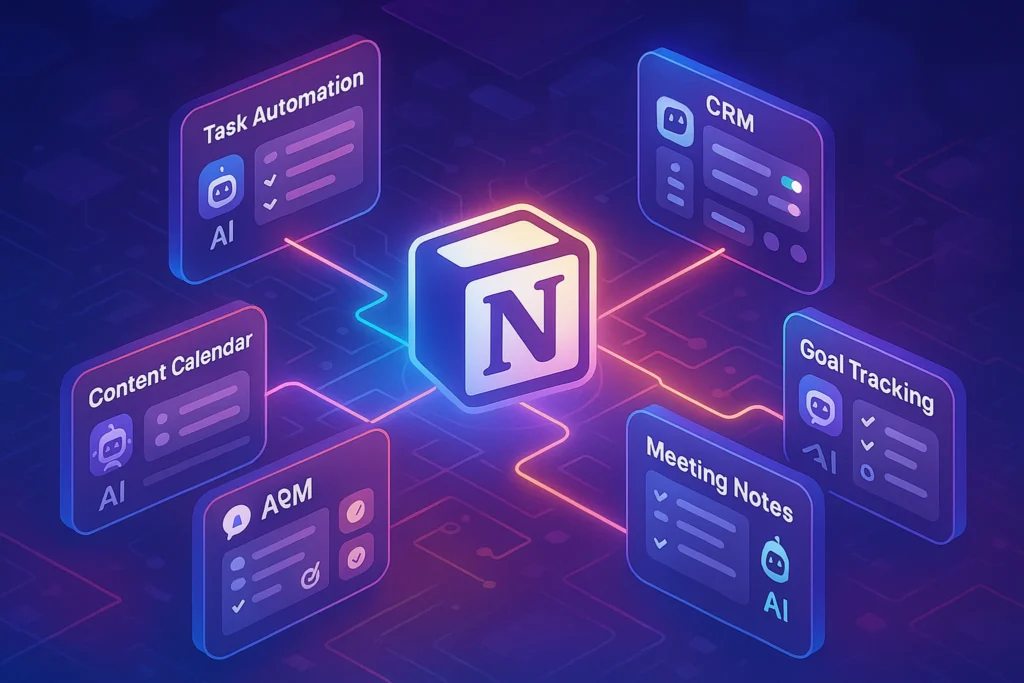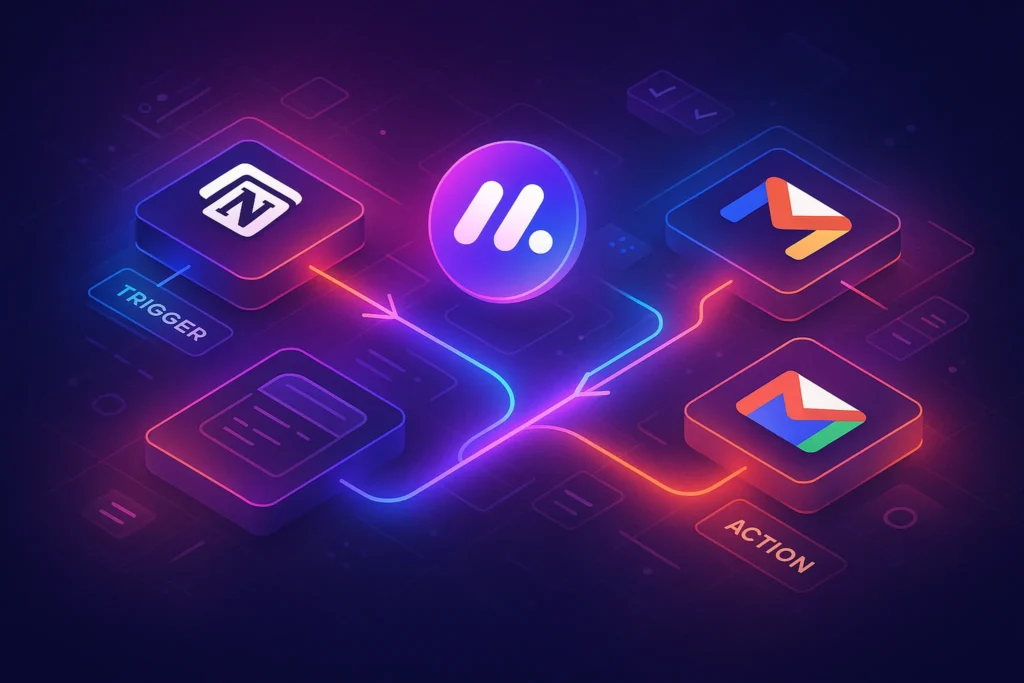-This post may contain affiliate links. If you click on one and make a purchase, I may earn a small commission at no extra cost to you.-
🧭 Introduction: Your Digital Ally Against Procrastination
Procrastination isn’t laziness—it’s an emotional regulation problem, and technology can help bridge the gap. Whether it’s the temptation of endless scrolls or task avoidance creep, the right digital tools can nudge you into action. In this guide, you’ll learn how to harness distraction blockers, habit trackers, intelligent calendars, and digital accountability systems to transform stress into progress.
⛔ Distraction Blockers – Creating a Focus-First Environment
When you open your workday, the world often isn’t focused on your to‑do list. Social media notifications, email pings, browser tabs—even the lure of checking the weather—can pull you away from productivity in an instant. Distraction blockers like Freedom and StayFocusd aren’t about punishment—they’re about creating a reliable workspace where decisions are consistent and cognitive fatigue is minimized.
Imagine waking up, scheduling a focused writing session in Freedom, and knowing your most addictive apps won’t invade your attention. Without that reassurance, you settle into tasks with less frustration and greater confidence. Forest takes this a step further: by visualizing a tree growing when you stay on-task, it turns self-control into a tangible reward. As time passes and the virtual tree grows taller, you feel nudged to sustain focus—not because you must, but because you don’t want to lose what you’ve grown.
By integrating StayFocusd in your browser during those morning hours of deep work, you reinforce those protections on your computer. What used to be a decision (“Do I check Instagram?”) becomes a non-issue. The blocker stops it before it starts, making focus feel less like a struggle and more like a natural state.
🔧 The Problem with Digital Temptations
Every ping, app badge, or pop-up distracts from your intended focus—triggering dopamine hits that derail your attention and reinforce procrastination loops.
🧪 Tech That Builds Boundaries
Apps like Freedom, StayFocusd, and Forest turn intention into action:
-
Freedom blocks websites and apps across devices
-
StayFocusd, a Chrome extension, limits time on distracting pages
-
Forest plants a virtual tree that grows as you resist your phone
These tools don’t just block—they signal commitment. Seeing a healthy virtual tree or losing phone access creates accountability through design.
🔧 How to Integrate
Schedule focus blocks in your chosen blocker. For example, start with two 45-minute work chunks using Freedom, and reinforce with StayFocusd on your browser. Pair this with a time system from Best Smart Calendar Apps for Productivity for a seamless daily flow.
🧩 Habit Trackers – From Intent to Consistency
Every morning begins with an intention: “Today, I will write for two hours.” But tomorrow? Procrastination creeps in. Habit trackers like Streaks and Habitica shift you from motivation-based effort to automatic behavior—helping you finish tasks by repeating your good routines, day after day.
Picture waking up and opening Streaks, seeing your progress toward five days of writing in a row. That visual progress makes it feel tangible, not abstract—just like brushing your teeth. Habitica gamifies the process, turning your habits into quests and rewarding small consistent actions. The dopamine hits from these micro-rewards create a positive feedback loop: you’re no longer pushing yourself forward, you’re continuing a win streak, and missing one entry feels like letting down both yourself and your mini-avatar.
This structure is especially powerful when you’re only tracking one habit at a time—like writing or reading. Feeling a six-day run become a seven-day streak triggers real satisfaction. Rather than relying on iron-willed willpower, you rely on social reinforcement (in Habitica) or visual progress (in Streaks), both rooted in behavioral science, not just good intentions.
🌙 Why Habits Beat Motivation
Goal-setting often fails because motivation fades. Habit trackers create momentum through repetition and feedback loops, reducing the reliance on willpower.
🧪 Digital Tools That Reinforce Routine
Apps like Habitica, Streaks, or Fabulous gamify your habits—turning daily check-ins into mini-achievements. You build streaks, set reminders, and measure progress automatically.
🔧 Setup Example
Pick one non-negotiable habit (like planning the night before), log it in Streaks, then reward yourself when a 7-day streak succeeds. This transforms intention into automation.
🗓️ Smart Calendars + Buffer Time
Planning your day often starts with a blank calendar. Without boundaries, you’ll either overbook or wander aimlessly. But with smart features from apps like Clockwise or Reclaim.ai, your planner starts working for you—not against you.
Picture this: you input your big tasks for the week—research report, manuscript draft, project review—and Clockwise automatically shifts meetings or travel blocks to create 90-minute uninterrupted “Deep Work Blocks.” This spacing isn’t random: cognitive science supports that uninterrupted chunks are significantly more mentally effective than scattered 10-minute fragments.
Entrepreneurs and creators report how this single adjustment changed everything: “I went from constantly switching gears to having actual, reliable time to think deeply.” Now you’re not rearranging your day—you’re designing a daily ecosystem where focus is expected, encouraged, and actively preserved.
By combining that with the system you already use for weekly planning—like the one outlined in “How to Set Up a Productivity System”—you don’t just fill a calendar, you create structure around how your mind functions best.
💡 Using Calendars to Avoid the “Blank Page” Syndrome
Time-blocking is effective, but smart calendars amplify it. Apps like Clockwise, Woven, or Reclaim.ai manage availability and add buffer zones. They free you from manual planning—ensuring focus blocks remain sacred.
🧪 How They Fight Procrastination
These calendars dynamically reserve time for deep work around meetings. Reclaim.ai even suggests scheduling based on your habits. Each reserved 90-minute block helps you start faster and stay consistent.
🔧 Use Case Example
Combine Clockwise with theme days from How to Set Up a Productivity System, and you’ll find your week structured automatically—deep work, creative time, breaks—without manual micromanagement.
🚧 Pomodoro Apps – Short Sprints to Reduce Overwhelm
When you face a large task like “finalize presentation,” it’s easy to freeze. The Pomodoro technique is brilliant precisely because it acknowledges this—and turns it into actionable productivity. Focus apps built around this method, like Be Focused or Focus Keeper, structure your day into short, digestible sprints broken by restorative breaks.
Rather than needing to muster the mental stamina for hours of focus, you commit to 25 minutes—enough time to dive in without overwhelm. After each sprint, you’re guided into a five-minute pause: a step away, a stretch, a glass of water. Then you jump back in. In practice, this rhythm mirrors the natural energy cycles of your brain.
Users often say: “I wrote my entire outline by lunchtime because I was sprinting and pausing, not slogging.” By signaling that brief focus is sufficient, Pomodoro apps deflate the anxiety that tasks “must be done all at once.” You simply continue in cycles, and tasks get done organically, without moralizing the struggle.
🎯 Breaking Down Large Tasks
Large tasks paralyze us. Pomodoro tools like Focus Keeper, Be Focused, or built-in modes in Habitica help chunk tasks into manageable bursts, reducing the fear of starting.
🧪 Scientific Backing
Neuroscience research shows that 25–30 minute high-intensity work with breaks helps maintain cognitive energy and avoid burnout.
🔧 Real-World Workflow
Plan your Pomodoro cycles at the start of the day. Use Focus Keeper to track four cycles, then take a longer break. Backup your blocks using StayFocusd to prevent wandering into rabbit holes.
🤝 Accountability Tech – Social Nudging & Metrics
It’s one thing to resist temptation alone—but much more powerful when others know of your goal. That’s where accountability tech becomes a game-changer. Whether it’s Beeminder charging your credit card when you slip, Trello sending reminders when tasks stall, or a shared Notion board where your progress is visible, publicly declaring your goals amplifies follow-through.
Consider this scenario: you write a weekly Notion update, visible to your partner or peer. On Mondays, you see their reply cheering you on or checking in. Suddenly, skip two weeks, and you feel nudged—not by guilt, but by genuine connection. It becomes a shared journey instead of your private struggle.
Combining this with discipline you built through blockers or sprints creates a robust system. You control your environment, your habits, and your emotional support all at once. Procrastination stops being a private failure—it becomes a shared mission.
Research shows that publicly logging goals increases commitment. Digital tools convert this into measurable outcomes.
🧪 Tools to Keep You Accountable
-
Beeminder charges you if you don’t meet goals—loss aversion in action
-
Trello + Butler bots can ping collaborators when you stall
-
Notion dashboards can be shared to track process transparently
🔧 Implementation
Start a Notion habit tracker shared with an accountability partner. Use Beeminder to vouch for extra focus days—if you miss, you pay your own coffee bill.
🧠 Mood-Mind Tech – Managing Emotional Triggers
At the surface, procrastination looks like “I’ll do it later.” But underneath, it’s often fear, perfectionism, or anxiety. Recognizing that feeling early is easier than working through it. Apps like Daylio and Moodnotes help by prompting you to check in mid-task: “How do you feel right now?”
Suppose you just finished a Pomodoro session but hit a snag. You open Daylio, log “anxious” or “stuck,” and suddenly you’ve externalized it. That small action helps sever the mental spiral. Over time, you see patterns—maybe replaying a tough conversation causes avoidance. Now you can intervene with strategies like walking, journaling, or even reshaping your next focus session.
This awareness changes the entire game. Procrastination is no longer a mystery—it’s an opportunity to build emotional resilience. You know when to pause and reset, rather than pushing through in burnout.
💔 You Can’t Block Emotions, But You Can Track Them
Procrastination often stems from anxiety, perfectionism, or fear. Tools like Daylio or Moodnotes help you journal emotions instantly, recognizing patterns before they derail you.
🧪 Emotional Awareness Backed by Psychology
CBT-based interventions show that merely tracking negative moods lowers their impact by 30%.
🔧 Daily Use Flow
At the start of each Pomodoro break, log your mood in Daylio. After a few days you’ll see triggers and can intervene—maybe a focus sprint is better started with white noise or music than silence.
🏁 The Tech Stack – Putting It All Together
🧩 Building Your Lean Launchpad
-
Choose Freedom or StayFocusd to block distractions
-
Set up Streaks or Habitica for habit momentum
-
Use Focus Keeper for Pomodoros
-
Coordinate deep work with Reclaim.ai
-
Add emotion-tracking via Daylio
This gives you distraction shields, motivational systems, focus boosters, structured calendar, and emotional awareness—all feeding into each other for holistic anti-procrastination support.
🧠 Nerd Verdict
Technology is a powerful scaffolding—but it’s only effective paired with insight. Blockouts, trackers, trackers, accountability, and mood logs together form a comprehensive anti-procrastination system. You’re not merely buying focus; you’re building tech-enhanced habits that last.
❓ FAQ
Q: Can app overuse cause burnout?
A: Use only essentials. One blocker + habit tracker + mood log + calendar is often enough. Keep tracking light and occasional audits to avoid ‘productivity overwhelm.’
Q: What about working offline or unplugged days?
A: Schedule unplugged Pomodoro days with a physical timer. Use analog journaling and plan ahead digitally to ensure focus remains on-track.
Q: How do I resist undoing settings (like turning off Freedom mid-block)?
A: Use accountability—pair Freedom with Beeminder. If you override, the result is financial (or social) consequence. Self-binding is stronger than willpower.
💬 Would You Bite?
Which tech anti-procrastination tool feels most likely to help you—blocker, habit tracker, mood log, or smart calendar?
Comment with your top pick, and I’ll share a free Notion template or priority promo link to help you start stronger!👇



